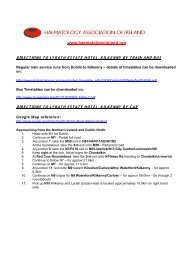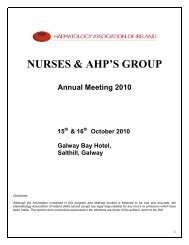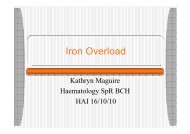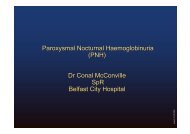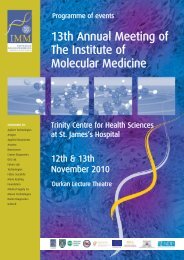Guidelines on Diagnosis and Treatment of Malignant Lymphomas
Guidelines on Diagnosis and Treatment of Malignant Lymphomas
Guidelines on Diagnosis and Treatment of Malignant Lymphomas
You also want an ePaper? Increase the reach of your titles
YUMPU automatically turns print PDFs into web optimized ePapers that Google loves.
Potential Pitfalls<br />
■ Failure to establish a diagnosis in the patient presenting<br />
with isolated, unexplained splenomegaly – the decisi<strong>on</strong><br />
to proceed with diagnostic splenectomy may be difficult,<br />
especially in elderly patients.<br />
■<br />
■<br />
Failure to distinguish from other CD5-negative indolent<br />
B cell lymphomas.<br />
Failure to distinguish from nodal marginal z<strong>on</strong>e lymphoma.<br />
<strong>Treatment</strong><br />
Most behave in an indolent fashi<strong>on</strong>, <strong>and</strong> patients should be<br />
treated as for low-grade/follicular lymphoma. Median survival is<br />
10-13 years. Splenectomy may be followed by haematological<br />
resp<strong>on</strong>ses <strong>and</strong> prol<strong>on</strong>ged survival, <strong>and</strong> is the treatment <strong>of</strong> choice<br />
for fit patients. Other treatment opti<strong>on</strong>s include splenic irradiati<strong>on</strong>,<br />
alkylating agents, purine analogues or anti-CD20 antibody.<br />
Transformati<strong>on</strong> to large cell lymphoma may occur.<br />
Resp<strong>on</strong>se Evaluati<strong>on</strong> <strong>and</strong> Follow Up<br />
As for other indolent lymphomas.<br />
21




